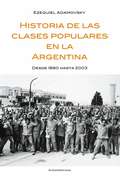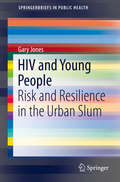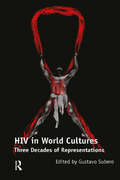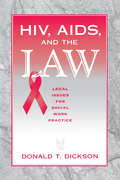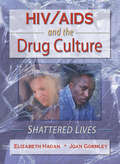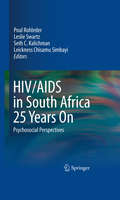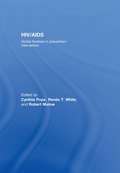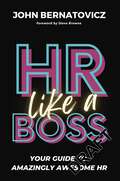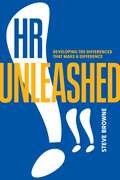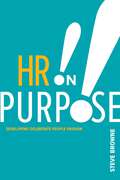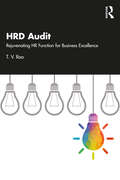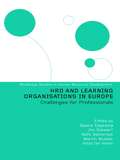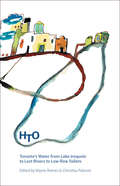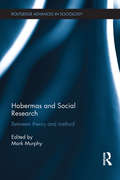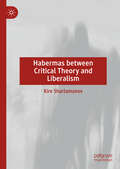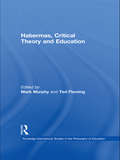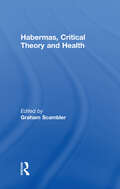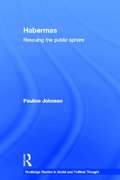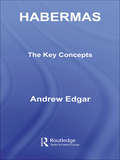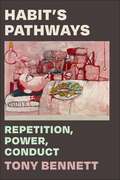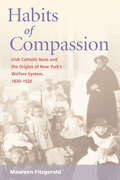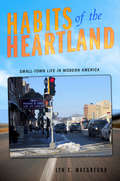- Table View
- List View
HISTORIA DE LAS CLASES POPULARES 2(EBOOK
by Ezequiel AdamovskyLa Argentina es incomprensible sin tomar en cuenta el desempeño que han tenido las clases populares en el pasado y el que aún tienen en el presente. Este libro cuenta la evolución del país desde los tiempos de la organización nacional hasta 2003, poniendo la mirada en los diversos aspectos del mundo popular, desde la vida cotidiana, la cultura, la religiosidad y el trabajo hasta las identidades, las ideologías, las formas de organización gremial y de acción política. No se trata sólo de una historia de los trabajadores, sino de la totalidad múltiple de los grupos que componen las clases populares en todo el territorio. Peones, obreros y empleados, campesinos y pequeños productores de cada región; inmigrantes europeos, pero también de países vecinos; criollos, afroargentinos, indígenas, tanto varones como mujeres, son los protagonistas de esta historia. Se da cuenta aquí del aporte que su presencia significó en la formación de la Argentina como país y se indaga, al mismo tiempo, sobre su lugar en el escenario actual, ofreciendo al lector una síntesis de las mejores investigaciones académicas de los últimos años.
HIV Prevention and Bisexual Realities
by Marie-Josée Leroux Viviane Namaste Tamara Vukov Jacky Vallee Mareva Lafreniére Nada Saghie Joseph Jean Gilles Robin Williamson Andre MonetteWhy is there so little HIV education at present directed towards bisexual men and women? This book offers a critical analysis of the issues in public health research and education that prevent adequate attention from being paid to bisexual realities. Addressing the implications of such limited knowledge, the authors raise important questions about the weaknesses of our current response to the HIV/AIDS pandemic.Through interviews with a variety of bisexual men and women, HIV Prevention and Bisexual Realities uncovers innovative, important directions to consider for more effective HIV prevention strategies. The authors' epistemological and methodological assessments of the current state of HIV/AIDS education will be indispensable for community health educators, policy makers, and those who study or work in public health.
HIV and Young People
by Gary JonesRevisiting the thinking on vulnerability to HIV and risk of infection, this book provides better understanding by considering the risk of HIV infection alongside notions of personal and collective resilience, dignity and humiliation. The work shows that young people in the urban slum dignify their world and, in doing so, establish priorities and draw on a set of references oftentimes intelligible to them alone. Moreover, humiliation, as an interpersonal event, adds to a sense of vulnerability and lies closely behind choices directly affecting personal health and livelihood. Thus, dignity and humiliation are shown for the first time to have a critical role in health seeking and risky behavior related to HIV, and this is an area in great need of further research. The crucial focus of this work is further emphasized by the rapid growth of urban slums, and high rates of HIV among both slum dwellers and young people, who continue to bear the brunt of the AIDS epidemic, thirty years on. This comprehensive literature review provides a compelling argument that the time is right to further explore the nexus of risk and resilience from a people-centered perspective. Fresh insight is critical to reach the goal of ending AIDS by 2030.
HIV in World Cultures: Three Decades of Representations
by Gustavo SuberoThis book analyses the way that HIV/AIDS is often narrativised and represented in contemporary world cultures, as well as the different strategies of remembrance deployed by different (sub)cultural groups affected by the illness. Through a close study of a variety of cultural texts; including cinema, literature, theatre, art and photography amongst others, it demonstrates the trajectory that such narratives and representations have undergone since the advent of the ’discovery’ of the disease in the 1980s. Acknowledging the central - yet often overlooked - role that cultural products have played in the construction of public opinion towards the condition itself and those who suffer it, this ground-breaking volume focuses on a variety of narratives, as well as strategies of coping with HIV/AIDS that have emerged across the globe. Bringing together research on the UK, North and South America, Africa and China, it provides rich textual analyses of the ways in which the HIV positive body has been portrayed in contemporary culture, with attention to the differences between specific national contexts, whilst keeping in view a space of commonality amongst the different experiences reflected in such texts. As such, it will be of interest to social scientists and scholars of cultural and media studies, concerned with cultural production and representations of the body and sickness.
HIV, AIDS, and the Law: Legal Issues for Social Work Practice and Policy
by Donald DicksonAlthough morbidity among HIV/AIDS victims has decreased, the rate of new infections has remained steady for several years, substantially increasing the likelihood that this epidemic will continue and expand as a concern for social workers and their clientele, both of whom will need to be kept informed of the complex laws governing the milieu and the consequences of the disease. This is certainly the case with its spread throughout Asia and Africa. In this new work, the author draws upon statutes and court decisions from across the United States to provide a comprehensive and current picture of the many facets of HIV/AIDS law, including health policy; confidentiality; privacy; bioethics; the workplace; and criminal law and corrections. The volume of legal, medical, social science, and popular literature pertaining to HIV/AIDS that has been published over the past two decades is staggering. Hence, any addition to this collection needs some justification. What Dickson offers is different from what has preceded. Rather than one more contribution to the extensive legal or social science literature, this book attempts to integrate the perspectives from two fields: law and social work. The hope is that this will give social workers, practitioners, and teachers a better understanding of one of the major issues that may face them in their work with patients and clients every day.To date, although there is extensive HIV and AIDS-related literature in social work and the social sciences, it is primarily focused on social work practice issues. Where law has been introduced in these works, it often is narrow in focus and, given the rapid changes in the field, no longer up to date. This book does not purport to discuss all legal issues in all jurisdictions relating to HIV/AIDS, but rather to choose selectively those that have particular relevance for social work and social policy. The author has placed reliance on those published medical works cited with approval in the legal and
HIV/AIDS and the Drug Culture: Shattered Lives
by Joan Gormley Elizabeth HaganIn this startling new collection of case studies entitled HIV/AIDS and the Drug Culture: Shattered Lives, you‘ll take an eye-opening and informative look at the lifestyle and culture of the HIV/AIDS intravenous drug users (IVDUs). You‘ll see how health care providers and caregivers can update their methods and mindsets in order to meet the needs of
HIV/AIDS in South Africa 25 Years On
by Leslie Swartz Seth C. Kalichman Poul Rohleder E. Cameron Leickness Chisamu SimbayiMuch has happened since the first appearance of AIDS in 1981: it has been identified, studied, and occasionally denied. The virus has shifted host populations and spread globally. Medicine, the social sciences, and world governments have joined forces to combat and prevent the disease. And South Africa has emerged as ground zero for the pandemic. The editors of HIV/AIDS in South Africa 25 Years On present the South African crisis as a template for addressing the myriad issues surrounding the epidemic worldwide, as the book brings together a widely scattered body of literature, analyzes psychosocial and sexual aspects contributing to HIV transmission and prevention, and delves into complex intersections of race, gender, class, and politics. Including largely overlooked populations and issues (e.g., prisoners, persons with disabilities, stigma), as well as challenges shaping future research and policy, the contributors approach their topics with rare depth, meticulous research, carefully drawn conclusions, and profound compassion. Among the topics covered: The relationship between HIV and poverty, starting from the question, "Which is the determinant and which is the consequence?"Epidemiology of HIV among women and men: concepts of femininity and masculinity, and gender inequities as they affect HIV risk; gender-specific prevention and intervention strategies. The impact of AIDS on infants and young children: risk and protective factors; care of children by HIV-positive mothers; HIV-infected children.Current prevention and treatment projects, including local-level responses, community-based work, and VCT (voluntary counseling and testing) programs.New directions: promoting circumcision, vaccine trials, "positive prevention."South Africa's history of AIDS denialism.The urgent lessons in this book apply both globally and locally, making HIV/AIDS in South Africa 25 Years On uniquely instructive and useful for professionals working in HIV/AIDS and global public health.
HIV/AIDS: Global Frontiers In Prevention/intervention
by Cynthia Pope Renee T. White Robert MalowHIV/AIDS: Global Frontiers in Prevention/Intervention provides a comprehensive overview of the global HIV/AIDS epidemic. The unique anthology addresses cutting-edge issues in HIV/AIDS research, policymaking, and advocacy. Key features include: · Nine original essays from leading scholars in public health, epidemiology, and social and behavioral sciences · Comprehensive information for individuals with varying degrees of knowledge, particularly regarding methodological and theoretical perspectives · A look into the future progression of HIV transmission and scholarly research HIV/AIDS: Global Frontiers in Prevention/Intervention is will serve as a precious resource as a textbook and reference for the university classroom, libraries, and researchers
HR Like a Boss: Your Guide to Amazingly Awesome HR
by John BernatoviczHR Like a Boss offers HR professionals all the tools they need to help employees feel more connected to their organization and ensure the organization's success. This book empowers HR professionals to become bold, business-savvy leaders who inspire connection and drive results. Written by a creative entrepreneur dedicated to the HR community, the book blends compelling stories of real practitioners who embody the characteristics of a "boss" - meaning a skilled business leader - with actionable insights to help readers elevate their impact. With a focus on building trust, fostering engagement, and aligning HR with business success, it shows how to lead with heart and strategy at once. A must-read for HR professionals who want to make a difference for their people, organizations, and communities.
HR Unleashed!!: Developing the Differences That Make a Difference
by Steve BrowneGreat HR is about more than policies - it's about people, purpose, and positive impact. In HR Unleashed!!, bestselling author Steve Browne shares heartfelt personal and professional stories that inspire HR professionals to embrace their calling and do their best work. With the same energy and authenticity found in HR on Purpose!! and HR Rising!!, the author encourages readers to pursue excellence while making a real difference in the lives of employees, the success of organizations, and the betterment of the workplace as a whole.This book is both a challenge and a celebration - a reminder that when HR leads with intention, it can change the world.
HR on Purpose: Developing Deliberate People Passion
by Steve BrowneCan you still be excited about HR after 30 years in the field? Absolutely - if you lead with purpose. In HR on Purpose, Steve Browne - seasoned HR leader and popular "Everyday People" blogger - invites readers to rethink what HR is and reimagine what it could be. Through a series of engaging stories, personal reflections and practical takeaways, he shows how to embrace HR not just as a profession but as a calling. With honesty, humor and inspiration, Browne helps HR professionals reconnect with the meaning and impact of their work.Perfect for anyone at any stage of their HR career, this book is a daily reminder that HR is about people, and it can be joyful, bold and transformational.
HRD Audit: Rejuvenating HR Function for Business Excellence
by T. V. RaoThis book presents the first ever comprehensive approach to evaluating and redesigning Human Resource Development (HRD) function and intervention to maximise their contribution to business excellence.The HRD function recognises the significance of competent and committed people in helping organizations achieve excellence. Studies across the globe have indicated that good HR systems and practices go a long way to make firms effective. Competent employees, top management, HR staff and the HRD climate play a critical role. This book examines how users of HRD are partners in any review and evaluation. It uses multiple methods like interviews with stakeholders, observation, questionnaires, analysis of documents and workshops. The book also outlines key HRD audit methodologies to review and rejuvenate HRD and align it with business excellence including intellectual capital building for the long term.An incisive and invigorating read, this book would be useful to the students, researchers, line managers, CEOs, CXOs and faculty of Human Resource Management, Organizational Behaviour and Applied Psychology. It would also be an invaluable handbook for practising business executives to help them implement the performance management and other talent management systems for leading excellence.
HRD and Learning Organisations in Europe
by Jim Stewart Martin Mulder Sally Sambrook Saskia Tjepkema Hilde Ter Horst'Lifelong learning' is moving from buzzword to reality for ever latger numbers of workers. Firms increasingly need their workers to be active, self-directed learners who contribute to innovations and improvements of processes, products and services. Companies that explicitly encourage and support worker learning, from a strategic perspective, are c
HTO: Toronto's Water from Lake Iroquois to Lost Rivers and Low-flow Toilets (uTOpia)
by Wayne Reeves Christina PalassioDrained by a half-dozen major watersheds, cut by a network of deep ravines and fronting on a Great Lake, Toronto is dominated by water. Like most cities, though, Toronto has mismanaged its water, from the decades-long transformation of the citys creeks into sewersheds to the alteration of Torontos waterfront. Recently, the trend of fettering Torontos water and putting it underground has been countered by persistent citizen-led efforts to recall and restore the citys surface water. In HTO: Toronto's Water From Lake Iroquois to Lost Rivers to Low-flow Toilets, 30 contributors examine the ever-changing interplay between nature and culture, and call into question the citys past, present and future engagement with water.
HaWoS – Fragebogen zur Erfassung von Glück bei der Arbeit: Manual (Manuale zu Testverfahren und Fragebögen)
by Ricarda Rehwaldt Timo KortschDie HappinessandWork-Scale (HaWoS) ist ein Verfahren, das Bedingungen für Glück bei der Arbeit erfasst. Es handelt sich um ein mehrdimensionales Instrument der Organisationsdiagnostik, das als Ausgangspunkt einer Förderung von Glück im Arbeitskontext dient. Die HAWOS misst das Glücksempfinden der Mitarbeitenden einer Organisation im Arbeitskontext über zwölf Items anhand der drei Faktoren des Arbeitsglücks: Sinnempfinden, Selbstverwirklichung und Gemeinschaftsgefühl. Die Items der HAWOS sind berufsbezogen formuliert, die Entwicklungs- und Validierungsstudien wurden an Personen mit Berufserfahrung durchgeführt. Hintergrund: Für Beschäftigte gewinnt eine erfüllende Arbeit immer mehr an Bedeutung. Die HaWoS setzt mit der Erfassung von glücksförderlichen Bedingungen bei der Arbeit genau dort an. Mit dem validierten HaWoS können Ansatzpunkte für die Gestaltung der Arbeit identifiziert werden und Interventionen evaluiert werden. Die Zielgruppen: Arbeits-, Wirtschafts- und Organisationspsycholog*innen Personalentwickler*innen Personalverantwortliche, Management, Führungskräfte Coaches Organisationsberater*innen EinsatzbereicheDie HaWoS kann im Individual- und im Gruppenkontext angewendet werden. Die HaWoS bildet dabei den Ausgangspunkt für Interventionen oder Entwicklungsprozesse mit dem Ziel einer glücksförderlicheren Arbeitsgestaltung. Die HaWoS kann außerdem in Transformationsprozessen eingesetzt werden, die einen Kulturwandel zu einer sinnhafteren Arbeit zum Ziel haben.Durchführung, Auswertung und Interpretation· Sehr gute Testökonomie: Bearbeitungszeit von max. 5 Minuten· Testdurchführungen erfolgt digital oder „paper-pencil“· Online-Auswertung direkt im Testsystem mit grafischen Ergebnissen auf einem intuitiv nutzbaren Dashboard Gütekriterien· Objektivität ist durch standardisierte Durchführung und Auswertung gewährleistet.· Reliabilität: Mit Werten zwischen = .77 und = .86 im guten Bereich.· Validität: Bestätigung der faktoriellen sowie der konvergenten Validität in mehreren Studien.· Normierung basierend auf einer Normstichprobe von 3353 Personen liegt vor.
Habermas and Social Research: Between Theory and Method (Routledge Advances in Sociology)
by Mark MurphyOne of the greatest contributors to the field of Sociology, Jürgen Habermas has had a wide-ranging and significant impact on understandings of social change and social conflict. He has inspired researchers in a range of disciplines with his multidimensional social theory, however an overview of his theory in applied settings is long overdue. This collection brings together in one convenient volume a set of researchers who place Jürgen Habermas’ key concepts such as colonisation, deliberation and communication at the centre of their research methodologies. Full of insight and innovation, this book is an essential read for those who want to harness the potential of Habermas’ core concepts in their own work, thereby helping to bridge the gap between theory and method in social research. Structured around three core themes, Habermas and Social Research provides a range of research case studies looking at system colonization, the politics of deliberation and communicative interactions. Issues as diverse as social movements, the digital public sphere, patient involvement, migration and preschool education, are all covered in the book, intertwined with a set of innovative approaches to theory application in social research. Designed to help researchers harness the potential of Habermas’ core concepts as methodological tools, this timely volume will prove highly useful for graduate and upper level undergraduates within the fields of theory and method, research design, public policy, education policy, urban and environmental planning.
Habermas between Critical Theory and Liberalism
by Kire SharlamanovThis book identifies the turning points in Habermas's work and his transition from one stage to another in the development of his theoretical oeuvre. Habermas began his academic career as part of the Frankfurt School, but the two key points at which his career changes trajectory are moving from historical materialism to normative idealism and playing with some of the ideas of liberalism. Normative idealism is an ahistorical theory that insists on the independence of the normative from material reality, severing the connection between base and superstructure that Marx wrote about. The break with the basic concepts of Marxism enabled Habermas to build his own discursive (critical) theory, which, especially since the end of the 1980s, takes the ideas of liberalism seriously. This book makes a systematic, multidimensional and detailed analysis of Habermas's theoretical oeuvre in two dimensions, chronological (in the order in which Habermas worked on certain topics) and thematic (enclosingcertain thematic units).
Habermas, Critical Theory and Education (Routledge International Studies in the Philosophy of Education)
by Mark Murphy Ted FlemingThe sociologist and philosopher Jürgen Habermas has had a wide-ranging and significant impact on understandings of social change and social conflict. However, there has been no concerted and focused attempt to introduce his ideas to the field of education broadly. This book rectifies this omission and delivers a definitive contribution to the understanding of Habermas's oeuvre as it applies to the field. The authors examine the contribution Habermas's theory has and can make to: pedagogy, learning and classroom interaction; the relation between education, civil society and the state; forms of democracy, reason and critical thinking; and performativity, audit cultures and accountability. Additionally, the book answers a range of more specific questions, including: what are the implications for pedagogy of a shift from a philosophy of consciousness to a philosophy of language?; What contribution can Habermas's re-shaping of speech act theory and communicative rationality make to theories of classroom interaction?; and how can his theories of reason and colonization be used to explore questions of governance and accountability in education?
Habermas, Critical Theory and Health
by Graham ScamblerThe contribution of the German sociologist and philosopher Jurgen Habermas has proved seminal for attempts to understand the nature of social change in the context of global capitalism. This book provides an accessible introduction to his work and shows how his theories can be fruitfully applied to a wide range of topics in the sociology of health and illness including: * lay health knowledge * doctor-patient interaction* health care decision-making * health inequalities * new social movements in health * health care rationing * the Foucault perspective. Habermas, Critical Theory and Health will open up both new issues and new lines of empirical enquiry which will be of special interest to teachers and students of social theory and the sociology of health and illness and offers healthcare professionals new perspectives on their practice.
Habermas, Foucault and the Political-Legal Discussions in China: A Discourse on Law and Democracy
by Fan YangThis book revisits the discourse theories of Habermas and Foucault in a Chinese context. After arguing that Habermas’s Discourse Theory of Law and Democracy is too normative and idealistic, it presents Foucault’s Discourse Theory of Power Relations to illustrate the tensions between different Western discourse theories. The book then draws on the normative concept of Confucian Rationality from traditional Chinese cultural sources in order to investigate how adaptable these two discourse theories are to the Chinese society, and to balance the tension between them. Presenting these three dimensions of discourse theory, as well as the relations between them, it also uses empirical descriptions of certain facts of political-legal discussion both in traditional China and in the country’s new media age to explain, supplement and question this theoretic framework.The book asserts that, because of the diverse modes of thinking in specific cultures, there might be different normative paradigms of discorse and different political-legal discussion modes across corresponding cultural contexts. Normative discourse theories provide guidance for the practices of deliberative democracy and legal discussions, which can in turn verify, supplement, improve and challenge the normative discourse theories. In addition to demonstrating the multiple dimensions of discourse theories, this research also promotes an approach to the Discourse Theory of Law and Democracy that combines elements of both Chinese and modern society.
Habermas: Rescuing the Public Sphere (Routledge Studies in Social and Political Thought #Vol. 46)
by Pauline JohnsonIf we are to believe what many sociologists are telling us, the public sphere is in a near terminal state. Our ability to build solidarities with strangers and to agree on the general significance of needs and problems seems to be collapsing. These cultural potentials appear endangered by a newly aggressive attempt to universalize and extend the norms of the market. For four decades Habermas has been trying to bring the claims of a modern public sphere before us. His vast oeuvre has investigated its historical, sociological and theoretical preconditions, has explored its relevance and meaning as well as diagnosing its on-going crises. In the contemporary climate, a systematic look at Habermas’ lifelong project of rescuing the modern public sphere seems an urgent task. This study reconstructs major developments in Habermas’ thinking about the public sphere, and is a contribution to the current vigorous debate over its plight. It marshals the significance of Habermas’ lifetime of work on this topic to illuminate what is at stake in a contemporary interest in rescuing an embattled modern public sphere. Habermas’ project of rescuing the neglected potentials of Enlightenment legacies has been deeply controversial. For many, it is too lacking in radical commitments to warrant its claim to a contemporary place within a critical theory tradition. Against this developing consensus, Pauline Johnson describes Habermas’ project as one that is still informed by utopian energies, even though his own construction of emancipatory hopes itself proves to be too narrow and one-sided.
Habermas: The Key Concepts (Routledge Key Guides)
by Andrew EdgarAn independently minded champion of ‘the project of modernity’ in a supposedly post-modern age, Jurgen Habermas (1929- ) is one of the most widely influential thinkers of our times. An easy-to-use A-Z guide to a body of work that spans philosophy, sociology, politics, law and cultural theory, Habermas: The Key Concepts explores Habermas’ writings on: capitalism genetics law neo-conservatism universal pragmatics. Fully cross-referenced with extensive suggestions for further reading, this is an essential reference guide to one of the most important social theorists of the last century.
Habit's Pathways: Repetition, Power, Conduct
by Tony BennettHabit has long preoccupied a wide range of theologians, philosophers, sociologists, psychologists, and neuroscientists. In Habit’s Pathways Tony Bennett explores the political consequences of the varied ways in which habit’s repetitions have been acted on to guide or direct conduct. Bennett considers habit’s uses and effects across the monastic regimens of medieval Europe, in plantation slavery and the factory system, through colonial forms of rule, and within a range of medicalized pathologies. He brings these episodes in habit’s political histories to bear on contemporary debates ranging from its role in relation to the politics of white supremacy to the digital harvesting of habits in practices of algorithmic governance. Throughout, Bennett tracks how habit’s repetitions have been articulated differently across divisions of class, race, and gender, demonstrating that although habit serves as an apparatus for achieving success, self-fulfillment, and freedom for the powerful, it has simultaneously served as a means of control over women, racialized peoples, and subordinate classes.
Habits of Compassion: Irish Catholic Nuns and the Origins of New York's Welfare System, 1830-1920 (Women, Gender, and Sexuality in American History)
by Maureen FitzgeraldThe Irish-Catholic Sisters accomplished tremendously successful work in founding charitable organizations in New York City from the Irish famine through the early twentieth century. Maureen Fitzgerald argues that their championing of the rights of the poor—especially poor women—resulted in an explosion of state-supported services and programs. Parting from Protestant belief in meager and means-tested aid, Irish Catholic nuns argued for an approach based on compassion for the poor. Fitzgerald positions the nuns' activism as resistance to Protestantism's cultural hegemony. As she shows, Roman Catholic nuns offered strong and unequivocal moral leadership in condemning those who punished the poor for their poverty and unmarried women for sexual transgression. Fitzgerald also delves into the nuns' own communities, from the class-based hierarchies within the convents to the political power they wielded within the city. That power, amplified by an alliance with the local Irish Catholic political machine, allowed the women to expand public charities in the city on an unprecedented scale.
Habits of the Heartland: Small-Town Life in Modern America
by Lyn C. Macgregor"So, how do Americans in a small town make community today? This book argues that there is more than one answer, and that despite the continued importance of small-town stuff traditionally associated with face-to-face communities, it makes no sense to think that contemporary technological, economic, and cultural shifts have had no impact on the ways Americans practice community life. Instead, I found that different Viroquans took different approaches to making community that reflected different confluences of moral logics--their senses of obligation to themselves, to their families, to Viroqua, and to the world beyond it, and about the importance of exercising personal agency. The biggest surprise was that these ideas about obligation and agency, and specifically about the degree to which it was necessary or good to try to bring one's life into precise conformance with a set of larger goals, turned out to have replaced more traditional markers of social belonging like occupation and ethnicity, in separating Viroquans into social groups. "--from Habits of the Heartland Although most Americans no longer live in small towns, images of small-town life, and particularly of the mutual support and neighborliness to be found in such places, remain powerful in our culture. In Habits of the Heartland, Lyn C. Macgregor investigates how the residents of Viroqua, Wisconsin, population 4,355, create a small-town community together. Macgregor lived in Viroqua for nearly two years. During that time she gathered data in public places, attended meetings, volunteered for civic organizations, talked to residents in their workplaces and homes, and worked as a bartender at the local American Legion post. Viroqua has all the outward hallmarks of the idealized American town; the kind of place where local merchants still occupy the shops on Main Street and everyone knows everyone else. On closer examination, one finds that the town contains three largely separate social groups: Alternatives, Main Streeters, and Regulars. These categories are not based on race or ethnic origins. Rather, social distinctions in Viroqua are based ultimately on residents' ideas about what a community is and why it matters. These ideas both reflect and shape their choices as consumers, whether at the grocery store, as parents of school-age children, or in the voting booth. Living with--and listening to--the town's residents taught Macgregor that while traditional ideas about "community," especially as it was connected with living in a small town, still provided an important organizing logic for peoples' lives, there were a variety of ways to understand and create community.
